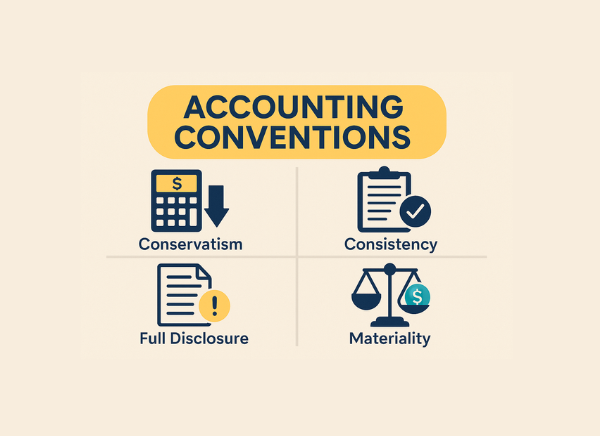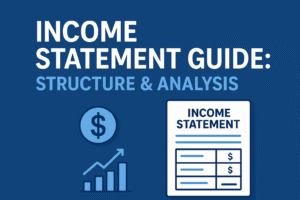An accounting convention is a widely accepted practice or guideline used in the preparation of financial statements when formal accounting standards do not provide clear rules. These conventions act as informal rules designed to address grey areas in accounting and ensure consistency, comparability, and reliability in financial reporting.
Although accounting conventions do not have the authority of formal accounting standards like GAAP or IFRS, they play an important role in shaping how companies recognize, measure, and disclose financial information—especially when professional judgment is required.
Understanding an Accounting Convention
Accounting is not always black and white. In many cases, accounting standards may leave room for interpretation, or may not address specific or emerging transactions altogether. This is where accounting conventions step in.
An accounting convention provides a structured, generally accepted way of handling those situations. These conventions are based on practical experience, industry norms, and core accounting principles such as relevance, reliability, consistency, and neutrality.
For example, when deciding how to recognize revenue for a partially completed contract, if no standard clearly dictates the method, a convention might guide accountants to use a conservative approach or refer to practices commonly followed in that industry.
While conventions offer flexibility, they are not static. They evolve over time to adapt to new economic conditions, business models, and changes in regulatory environments. However, once a formal standard is issued that addresses a specific issue, the accounting convention is overridden and is no longer applied.
Accounting Convention Methods
There are four key accounting conventions that professionals rely on to ensure that financial reporting is both accurate and ethical. These include:
1. Conservatism
The conservatism convention is a guiding principle that encourages caution when recording revenues and expenses. Under this convention, accountants are advised to anticipate potential losses but not to assume gains until they are actually realized.
For instance, if a business expects a potential lawsuit loss, the possible liability is recorded. But if it expects a potential gain from a pending settlement, it is not recorded until the gain is certain. This approach minimizes the risk of overstating financial performance and gives stakeholders a realistic view of the company’s position.
The conservatism principle supports responsible reporting, particularly in uncertain or volatile economic conditions. It is especially important in valuing assets, assessing impairment, and estimating contingent liabilities.
2. Consistency
The consistency convention requires that once an accounting method is chosen, it should be applied consistently from one accounting period to another. This means using the same depreciation method, inventory valuation approach, or revenue recognition process over time—unless a valid reason exists for changing it.
Consistency ensures that financial statements are comparable across periods, which helps stakeholders analyze trends and make informed decisions. Any deviation from established methods must be disclosed, along with the financial impact of the change.
There are three types of consistency:
- Horizontal consistency: Comparing the same company’s financial statements across multiple periods.
- Vertical consistency: Ensuring uniform accounting methods are applied within the same reporting period.
- Cross-company consistency: Comparing financial results across companies in the same industry using similar accounting practices.
3. Full Disclosure
The full disclosure convention ensures that all relevant and material information is communicated to users of financial statements. This includes disclosures in footnotes, management commentary, or additional schedules that supplement the main financial statements.
The idea is to provide transparency and prevent misleading financial reporting. Even if a piece of information is not directly included in the financial statements, it must be disclosed if it could influence the decisions of investors, creditors, or other users.
Examples include disclosing:
- Pending litigation or tax disputes
- Significant accounting policy changes
- Related-party transactions
- Events after the reporting period
The full disclosure convention supports transparency, builds trust, and helps prevent information asymmetry between companies and their stakeholders.
4. Materiality
The materiality convention focuses on the importance or relevance of financial information. If the omission or misstatement of an item could affect the economic decisions of users, it is considered material and must be reported.
Materiality is a matter of professional judgment. It is assessed both quantitatively (size of the item) and qualitatively (nature of the item). For example, a $1000 error might be material for a small business but immaterial for a multinational corporation.
This convention allows accountants to ignore trivial errors or transactions that would not affect a user’s understanding of financial performance. However, it also places responsibility on accountants to assess materiality appropriately to ensure fair presentation.
Areas Where Accounting Conventions Apply
Accounting conventions are applied in various scenarios where standards are silent, evolving, or ambiguous. Some common areas include:
- Revenue recognition: Deciding when revenue should be recognized if contract terms are complex.
- Depreciation methods: Choosing between straight-line and reducing-balance methods based on business nature.
- Asset valuation: Applying conservatism when determining fair market value or recording impairments.
- Inventory accounting: Selecting between FIFO, LIFO, or weighted-average methods in absence of specific requirements.
- Contingent liabilities: Recognizing potential losses from lawsuits or guarantees even before the outcome is finalized.
- Expense recognition: Applying judgment when allocating costs like marketing or research and development over time.
In all these cases, accounting conventions ensure that companies report information in a way that is responsible, comparable, and understandable to external users.
Summary Table of Key Accounting Conventions
| Convention | Purpose |
| Conservatism | Prevents overstatement of assets and income; records losses sooner and gains later. |
| Consistency | Ensures comparable financial reporting across periods and entities. |
| Full Disclosure | Ensures all relevant information is provided to stakeholders. |
| Materiality | Focuses attention on items significant enough to affect user decisions. |
Final Thoughts
Accounting conventions are not laws, but they are vital tools that fill the gaps left by formal standards. They bring structure, consistency, and ethical responsibility into financial reporting, especially in situations requiring professional judgment.
As business transactions grow more complex, the importance of applying these conventions thoughtfully becomes even more critical. By following principles like conservatism, consistency, full disclosure, and materiality, businesses can maintain transparency and earn the trust of stakeholders.
Understanding and applying accounting conventions is essential not just for accountants and auditors, but for anyone who wants to interpret or rely on financial information with confidence.







